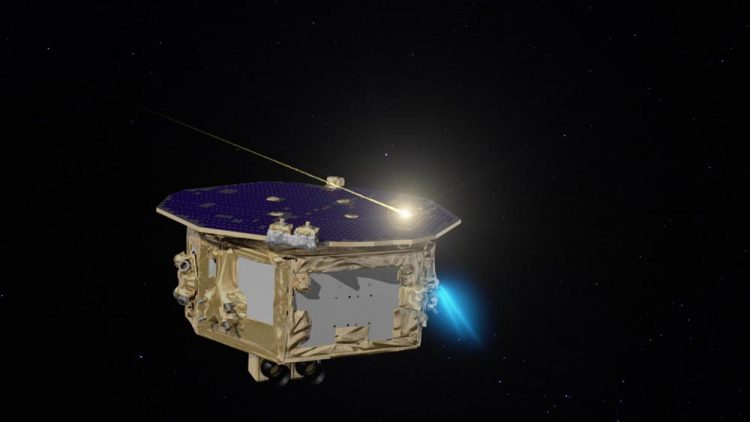How LISA pathfinder detected dozens of 'comet crumbs'

Illustration of LISA Pathfinder Credit: NASA's Goddard Space Flight Center
A team of NASA scientists leveraged LISA Pathfinder's record-setting sensitivity for a different purpose much closer to home — mapping microscopic dust shed by comets and asteroids.
Most of these particles, known as micrometeroids, have masses measured in micrograms, similar to a small grain of sand.
But at speeds reaching 40,000 mph (64,000 kph), even micrometeoroids pack a punch.
The NASA team, led by Ira Thorpe at NASA's Goddard Space Flight Center in Greenbelt, Maryland, detected 54 impacts during the mission, which lasted from 2015 to 2017.
Modeling the strikes allowed the researchers to determine what kinds of objects shed the dust.
The findings are broadly consistent with existing ideas of what generates micrometeroids found near Earth. The dusty culprits are mostly short-period comets whose orbits are determined by Jupiter.
Comets with longer periods, like Halley's comet, also contributed dust that LISA Pathfinder sensed.
The new measurements could help refine dust models used by researchers in a variety of studies, from understanding the physics of planet formation to estimating impact risks for current and future spacecraft.
Media Contact
All latest news from the category: Physics and Astronomy
This area deals with the fundamental laws and building blocks of nature and how they interact, the properties and the behavior of matter, and research into space and time and their structures.
innovations-report provides in-depth reports and articles on subjects such as astrophysics, laser technologies, nuclear, quantum, particle and solid-state physics, nanotechnologies, planetary research and findings (Mars, Venus) and developments related to the Hubble Telescope.
Newest articles

A universal framework for spatial biology
SpatialData is a freely accessible tool to unify and integrate data from different omics technologies accounting for spatial information, which can provide holistic insights into health and disease. Biological processes…

How complex biological processes arise
A $20 million grant from the U.S. National Science Foundation (NSF) will support the establishment and operation of the National Synthesis Center for Emergence in the Molecular and Cellular Sciences (NCEMS) at…

Airborne single-photon lidar system achieves high-resolution 3D imaging
Compact, low-power system opens doors for photon-efficient drone and satellite-based environmental monitoring and mapping. Researchers have developed a compact and lightweight single-photon airborne lidar system that can acquire high-resolution 3D…





















